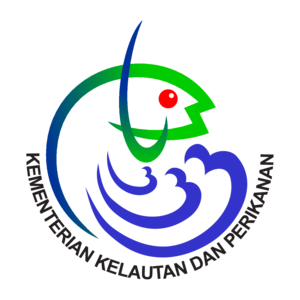HUBUNGAN PARAMETER LINGKUNGAN TERHADAP GANGGUAN KESEHATAN KARANG DI PULAU TUNDA -– BANTEN
Abstract
Kondisi lingkungan dan aktivitas manusia menyebabkan terganggunya ekosistem pesisir khususnya terumbu karang. Gangguan kesehatan dan penyakit pada karang dapat terjadi karena perubahan kondisi lingkungan. Pulau Tunda merupakan pulau terluar yang berbatasandengan Teluk Jakarta dan Teluk Banten diasumsikan mendapatkan tekanan lingkungan dari pembangunan daerah tersebut. Penelitian ini mengkaji apakah parameter lingkungan memiliki hubungan dengan sebaran gangguan kesehatan karang.Survei lapangandilakukan pada Januari 2014. Pengambilan data dilakukan dengan metode transek sabuk dengan lebar 1 x 1m pada kedalaman berkisar 3 – 5m. Hubungan parameter lingkungan dan kelimpahan penyakit karang dianalisis dengan Principal Components Analysisdan sebaran penyakit karang dianalisis dengan Correspondent Analysis.Dari hasil pengamatan, jenis gangguan yang terdapat pada lokasi pengamatan Pulau Tunda - Banten yaitu pemutihan karang (Full, Patches, dan Stripes) sedangkan gangguan kesehatan lainnya meliputi Cots, fishbite, PR, IG, SP dan SD. Pemutihan karang bentuk Patches merupakan bentuk pemutihan karang yang banyak ditemukan dari seluruh lokasi pengamatan dengan total koloni yang terserang sebanyak 91 koloni. Gangguan kesehatan SP (Spons Over) merupakan gangguan kesehatan yang sedikit (7 koloni) ditemukan pada lokasi pengamatan.Sebaran pemutihan karang memiliki hubungan terhadap salinitas, suhu dan fosfat sedangkan gangguan kesehatan karang SD dan SP memiliki hubungan terhadap konsentrasi nitrat dan silikat.
Keywords
Full Text:
PDFReferences
[KEPMEN LH] Keputusan Menteri Lingkungan Hidup Nomor 51. 2004.Baku Mutu Air Laut Untuk Biota Laut.
Adriman., A. Purbayanto, S. Budiharso, A. Damar. 2013. Pengaruh Sedimentasi Terhadap Terumbu Karang Di Kawasan Konservasi Laut Daerah Bintan Timur Kepulauan Riau. Jurnal Terubuk. 41(1): 90-101.
Arman A.A., N.P. Zamani, T.W. Watanabe. 2013. Studi Penentuan Umur dan Laju Pertumbuhan Terumbu Karang terkait dengan Perubahan Iklim Ekstrim Menggunakan Sinar-X. Jurnal Aplikasi Isotop Radiasi. 9(1): 1-10.
Baird A.H., P.A. Marshall. 2002. Mortality, growth and reproduction in scleractinian corals following bleaching on the Great Barrier Reef. J. Marine Ecology Progress Series. 237: 133-141.doi:10.3354/meps237133.
Baker A.C., P.W. Glynn, B. Riegl. 2008. Climate change and coral reef bleaching: An ecological assessment of long-term impacts, recovery trends and future outlook. Estuarine, Coastal and Shelf Science. 80(4): 435-471.doi:10.1016/j.ecss.2008.09.003.
Bartley R., Z.T. Bainbridge, S.E. Lewis, F.J. Kroon, S.N. Wilkinson, J.E. Brodie, D.M. Silburn. 2014. Relating sediment impacts on coral reefs to watershed sources, processes and management: A review. J. Science of the Total Environment. 468-469:1138-1153.doi:10.1016/j.scitotenv.2013.09.030.
Beeden R., B.L. Willis, L. Raymundo, C.A. Page, E. Weil. 2008. Underwater cards for assessing coral health on Indo-Pacific reefs. Coral Reef Targeted Research and Capacity Building for Management Program. Currie Communications, Melbourne, 22p.
Bell P.R.F. 1992.Eutrophication and coral reefs - some examples in the Great Barrier Reef Lagoon.Water Resources.5:553–568.doi:10.1016/0043-1354 (92)90228-V.
Benzoni F., P. Galli, M. Pichon. 2010. Pink spots on Porites: not always a coral disease. J. Coral reefs. 29(1):153-153.doi:10.1007/s00338-009-0571-z.
Brown B.E. 1997. Disturbances to Reefs in Recent Times.In.Life and Death of Coral. 354-379.
Bruno J.F., L.E. Petes, C. Drew Harvell, A. Hettinger. 2003. Nutrient enrichment can increase the severity of coral diseases. Ecology Letters. 6(12): 1056-1061.doi:10.1046/j.1461-0248.2003.00544.x.
Burke C.D., T.M. McHenry, W.D. Bischoff, E.S. Huttig, W. Yang, L. Thorndyke. 2004. Coral mortality, recovery and reef degradation at Mexico Rocks Patch Reef Complex, Northern Belize, Central America: 1995–1997. In Coelenterate Biology 2003 (pp. 481-487).Springer Netherlands.
Cervino J.M., R. Hayes, T.J. Goreau, G.W. Smith. 2004. Zooxanthellae regulation in yellow blotch/band and other coral diseases contrasted with temperature related bleaching: In situ destruction vs expulsion. J. Symbiosis. 37(1/3): 63-86.
Coles S.L., Y.H. Fadlallah. 1991. Reef coral survival and mortality at low temperatures in the Arabian Gulf: new species-specific lower temperature limits. J. Coral Reefs. 9(4):231-237.doi:10.1007/BF00290427.
DouglasA.E.2003. Coral bleaching––how and why?.Marine Pollution Bulletin. 46(4), 385-392.doi:10.1016/S0025-326x(03)00037-7.
Dunn J.G., P.W. Sammarco, G. LaFleur. 2012. Effects of phosphate on growth and skeletal density in the scleractinian coral Acropora muricata: A controlled experimental approach. Journal of Experimental Marine Biology and Ecology. 411: 34-44. doi:10.1016/j.jembe.2011.10.013.
Edinger E.N., M.J. Risk. 2000. Reef classification by coral morphology predicts coral reef conservation value. Biological Conservation. 92(1):1-13.
Erftemeijer P.L., B. Riegl, B.W. Hoeksema, P.A. Todd. 2012. Environmental impacts of dredging and other sediment disturbances on corals: a review. J. Marine Pollution Bulletin. 64(9):1737-1765.doi:10.1016/j.marpolbul.2012.05.008.
Furby K.A., A. Apprill, J.M. Cervino, J.E. Ossolinski, K.A. Hughen. 2014. Incidence of lesions on Fungiidae corals in the eastern Red Sea is related to water temperature and coastal pollution. Marine Environmental Research. 98: 29-38.doi:10.1016/j.marenvres.2014.04.002.
Gleason D.F. 1998. Sedimentation and distributions of green and brown morphs of the Caribbean coral Porites astreoides Lamarck.J.of Experimental Marine Biology and Ecology. 230(1):73-89.doi:s0022-0981(98)00084-7.
Glynn P.W. 1993. Coral reef bleaching: ecological perspectives. J. Coral Reefs. 12(1):1-17.doi: 10.1007/BF00303779.
Glynn P.W., I.C. Enochs. 2011. Invertebrates and their roles in coral reef ecosystems. In Coral reefs: an ecosystem in transition. 273-325pp. Springer Netherlands.doi: 10.1007/978-94-007-0114-4_18
Hayes R.I., T.J. Goreau. 1992. Histology of Caribbean and south Pacific bleached corals. Proc. 7th Int. Coral Reef Symp.1:71pp.
Jompa J., L.J. McCook. 2003. Coral-algal competition: macroalgae with different properties have different effects on corals. Marine Ecology Progress Series. 258: 87-95.
Kuntz N.M., D.I. Kline, S.A. Sandin, F. Rohwer. 2005. Pathologies and mortality rates caused by organic carbon and nutrient stressors in three Caribbean coral species. Marine Ecology Progress Series. 294:173-180.
Kushmaro A., E. Rosenberg, M. Fine, Y.B. Haim,Y. Loya. 1998. Effect of temperature on bleaching of the coral Oculina patagonica by Vibrio AK- 1. Marine Ecology Progress Series. 171:131-137.
Lalang. 2015. Laju Pertumbukah Linier Karang Porites lutea Menggunakan Sinar –X di Pulau Tunda Kebupaten Serang Provinsi Banten[Tesis]. Bogor (ID):Institut Pertanian Bogor.
Le Tissier M.D.A.A.,B.E. Brown. 1996. Dynamics of solar bleaching in the intertidal reefs coral Goniastrea aspera at KO Phuket, Thailand. Marine Ecology Progress Series. 136:235-244.
McClanahan T.R. 2004.The relationship between bleaching and mortality of common corals.Journal Marine Biology. 144(6):1239-1245.doi: 10.1007/s00227-003-1271-9.
McClanahan T.R., E. Sala, P.A. Stickels, B.A. Cokos, A.C. Baker, C.J. Starger, S.H. Jones. 2003. Interaction between nutrients and herbivory in controlling algal communities and coral condition on Glover’s Reef, Belize. Marine Ecology Progress Series. 261:135-147.
Myers R.L., L.J. Raymundo. 2009. Coral disease in Micronesian reefs: a link between disease prevalence and host abundance. Diseases of Aquatic Organisms. 87(1-2): 97-104. doi: 0.3354/dao02139.
Nordemar I., M. Nystrom, R. Dizon. 2003. Effects of elevated seawater temperature and nitrate enrichment on the branching coral Porites cylindrica in the absence of particulate food. Marine Biology. 142(4): 669-677.doi: 10.1007/s00227-002-0989-0.
Obura D.O. 2009. Reefcoral bleach to resist stress. Marine Pollution Bulletin. 58:206-212.doi:10.1016/j.marpolbul.2008.10.002.
Pangaribuan T.H., C. Ain, P. Soedarsono. 2013.Hubungan kandungan Nitrat dan Fospat dengan densitas zooxanthella pda polip karang Acropora sp di perairan terumbu karang menjangan kecil, Karimun Jawa. Managent of Aquatic Resources: 2(4): 136-145.
Patterson K.L., J.W. Porter, K.B. Ritchie, S.W. Polson, E. Mueller, E.C. Peters, G.W. Smith. 2002. The etiology of white pox, a lethal disease of the Caribbean Elkhorn coral, Acropora palmata. Proceedings of the National Academy of Sciences.PNAS. 99(13): 8725-8730.doi: 10.1073/pnas.092260099.
Riska. N.P. ZamanI, T. Prartono, A. Arman. 2015. Plumbum (Pb) Concentration In Annual Bands Of Coral Porites Lutea At Tunda Island, Banten. Jurnal Ilmu dan Teknologi Kelautan Tropis, 7(1):235-245
RoffG., O. Hoegh-Guldberg, M. Fine. 2006. Intra-colonial response to Acroporid “white syndrome” lesions in tabular Acropora spp.(Scleractinia). Coral Reefs, 25(2):255-264.doi:10.1007/s00338-006-0099-4.
Rogers C.S. 1990.Responses of coral reefs and reef organisms to sedimentation.J.Marine Ecology Progress Series. 62(1):185-202.
Rogers C.S., K.P. Sutherland, J.W. Porter. 2005. Has white pox disease been affecting Acropora palmata for over 30 years?.Coral Reefs. 24(2): 194-194.doi: 10.1007/s00338-004-0470-2.
RotjanR.D., S.M.Lewis. 2008. Impact of coral predators on tropical reefs. Marine Ecology Progress Series. 367:73-91.doi:10.3354/meps07531.
Sabine A.M., T.B. Smith, D.E. Williams, and M.E. Brandt. 2015. Environmental conditions influence tissue regeneration rates in scleractinian corals. Marine Pollution Bulletin. Article in press: doi:10.1016/j.marpolbul.2015.04.006
Santavy D.L., E.C. Peters, C. Quirolo, J.W. Porter, C.N. Bianchi. 1997. Yellow-blotch disease outbreak on reefs of the San Blas Islands, Panama. Coral Reefs. 18:19
Seveso D., S. Montano, G. Strona, I. Orlandi, M. Vai, P. Galli. 2012. Up-regulation of Hsp60 in response to skeleton eroding band disease but not by algal overgrowth in the scleractinian coral Acropora muricata. Marine Environmental Research.78:34-39.doi:10.1016/j.marenvres.2012.03.008.
Snedaker S.C. 1995. Mangroves and climate change in the Florida and Caribbean region: scenarios and hypotheses. In Asia-Pacific Symposium on Mangrove Ecosystems (pp. 43-49).Springer Netherlands.
Suharsono 1999.Condition of coral reef ressources in Indonesia. Oceanology Research and Development center (Pusat Penelitian dan Pengembangan Oseanologi-LIPI).
Tanaka Y., M. Inoue, T. Nakamura, A. Suzuki, K. Sakai. 2014. Loss of zooxanthellae in a coral under high seawater temperature and nutrient enrichment. Journal of Experimental Marine Biology and Ecology. 457, 220-225.doi: 10.1016/j.jembe.2014.04.019.
Thurber R.L.V., K.L. Barott, D. Hall, H. Liu , B. Rodriguez-Mueller , C. Desnues, F.L. Rohwer . 2008. Metagenomic analysis indicates that stressors induce production of herpes-like viruses in the coral Porites compressa. Proceedings of the National Academy of Sciences. PNAS. 105(47):18413-18418.doi:10.1111/j.1462-2920.2009.01935.x.
Tomascik T,. A.J. Mah, A. Nontji, M.K. Moosa. 1997. The Ecology of the Indonesian Seas. Part One. The Ecology of Indonesia Series Vol.VII.
Ward-Paige C.A., M.J. Risk, O.A. Sherwood, and W.C. Jaap. 2005. Clionid sponge surveys on the Florida Reef Tract suggest land-based nutrient inputs. Marine Pollution Bulletin. 51(5):570-579. doi:10.1016/j.marpolbul.2005.04.006.
Weber M., D.D. Beer, C. Lott, L. Polerecky, K. Kohls, R.M.M. Abed, T.G. Ferdelman, K.E. Fabricius. 2012. Mechanismsof damage to coral exposes to sedimentasi.PNAS.109(14):E1558/E1567.doi:10.1073/pnas.1100715109/DCSupplemental.
Wilkinson C. 2008. Status of coral reefs of the world: 2008. Global Coral Reef Monitoring Network and Reef and Rain forest Research Centre, Townsville, Australia. 296 p.
WorkT.M.,G.S. Aeby .2011. Pathology of tissue loss (white syndrome) in Acropora sp. corals from the Central Pacific.Journal of invertebrate pathology, 107(2):127-131. doi:10.1016/j.jip.2011.03.009.
YeeS.H., D.L. Santavy,M.G. Barron. 2008. Comparing environmental influences on coral bleaching across and within species using clustered binomial regression. Ecological Modelling, 218(1):162-174. doi:10.1016/j.ecolmodel.2008.06.037.
Yee S.H., D.L. Santavy, M.G. Barron. 2011. Assessing the effects of disease and bleaching on Florida Keys corals by fitting population models to data. Ecological Modelling. 222(7):1323-1332. doi:10.1016/j.ecolmodel.2011.01.009.
Zamani N.P. 2015. Abundance of Acanthaster Planci As Health Of Coral Indicator In Tunda Island, Serang Regency, Banten. Jurnal Ilmu dan Teknologi Kelautan Tropis, 7(1):273-286.
DOI: http://dx.doi.org/10.15578/jkn.v11i2.6112
Copyright (c) 2017 Jurnal Kelautan Nasional
Copyright of Jurnal Kelautan Nasional (p-ISSN 1907-767X, e-ISSN 2615-4579)
Pusat Riset Kelautan
Badan Riset dan Sumberdaya Manusia Kelautan dan Perikanan
Kementerian Kelautan dan Perikanan
Index by
 Jurnal Kelautan Nasional
Jurnal Kelautan Nasional
















